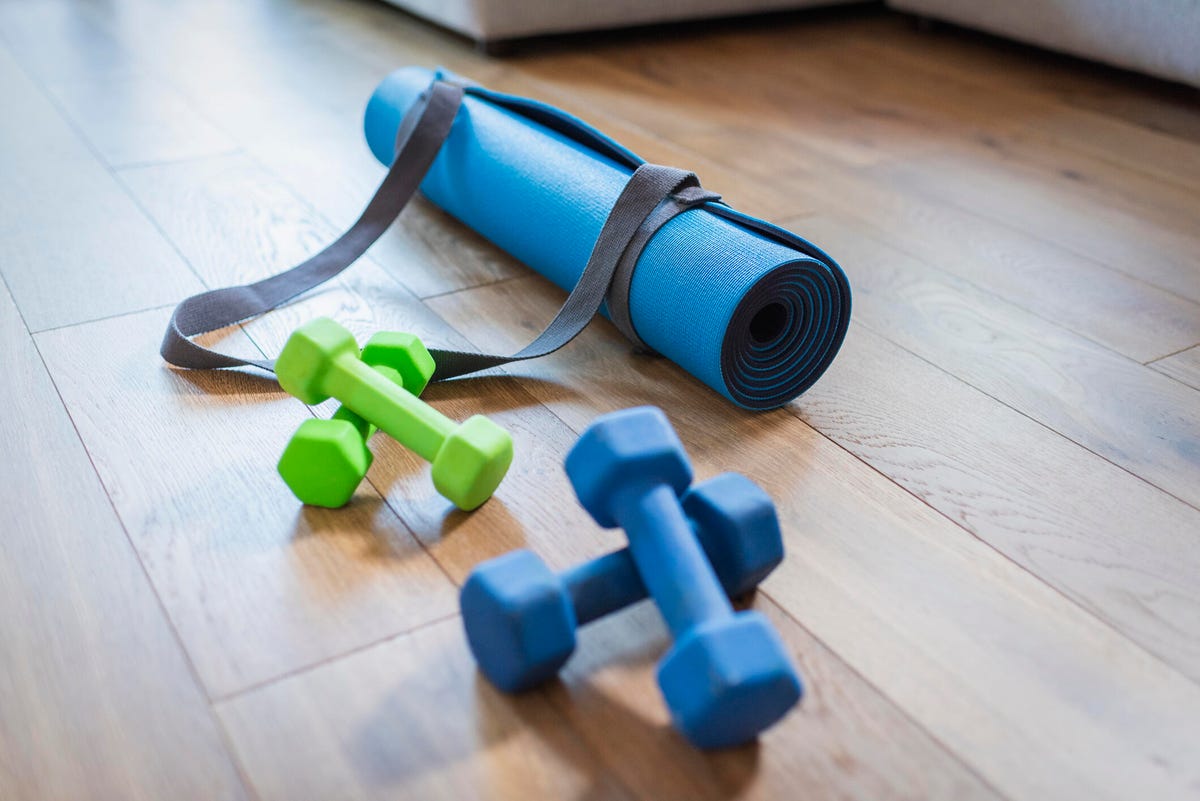There’s nothing like a new year to make you rethink your health. And if you’re one of the three quarters of Americans who don’t meet the recommendations for weekly physical activity, one of your New Year’s resolutions may be to move your body more. But there’s one key challenge that can get in the way: sometimes you just really, really don’t feel like it.
Whether you struggle with your mental health, are low on energy or just plain can’t get motivated to move, you’re not alone. Here are six ways that personal trainers and physical therapists say you can stay active when you don’t feel like it.
Aim small
One tip that fitness experts agree on is to set small, achievable goals. For example, your initial goal could be to make it through just 5 minutes of exercise. Similarly, you could aim to do just three push-ups (or another exercise of choice).
“The key is to make the first step so easy that you can’t say no,” said Julie Lohre, a certified personal trainer, women’s fitness expert and co-founder of Fitbody.
Once you get moving, you’ll often feel like continuing for longer.
“Our minds want to stop sooner than our bodies, so get moving for a short time and reevaluate afterward,” said Daniel Richter, certified personal trainer and founder of Strength Log.
But even if you stop after reaching your initial goal, any exercise is better than none. Andrew White, personal trainer and founder of GarageGymPro, said, “it’s better to commit to a 10-minute walk than to aim for an hour and end up doing nothing.”

Take it easy
When you don’t feel like getting off the couch at all, give yourself permission to leave the 10k runs to somebody else. Try something simple, light and low-impact instead.
As an orthopedic and sports physical therapist at Rudis, Andrew Nasr specializes in helping recovering athletes stay active in gentle and achievable ways. He recommends yoga, tai chi, swimming or walking on low-energy days.
“Walking is almost always comfortable enough for injured athletes, so it’s great exercise on days when you just don’t feel like doing anything else,” Nasr said. “Even just 15 to 20 minutes outside in nature can lift your mood while getting your blood circulating.”
White also recommends dancing or body weight exercises, while Lohre says you can try doing household chores at a brisk pace. Anything that gets you moving counts.
You can also try exercises that allow you to stay on the couch (or right next to it) and watch TV. “Cozy cardio” has become a fitness trend for a reason: It’s gentle and comfortable, and you can do it from your living room, which makes it feel that much easier to achieve.
Find your motivation
Remembering why you want to stay active can be the thing that keeps you going when nothing else will. For example, maybe you want to live longer, feel stronger or more flexible, or build muscle. You might also have more specific goals, like running a certain distance.
Different things motivate different people – and staying healthy is only one part of the picture. In a survey by the fitness app Strava, athletes reported that factors like social connection are also common reasons for working out.
It’s worth digging deep to find what motivates you and see how you can keep that in mind and incorporate it into your activities. If social connection is big for you, for example, group workout classes or a workout buddy could be helpful. Having fun or feeling good is also a common motivator, in which case it’s key to find an activity that you deeply enjoy.

Respect your limits
How do you feel when you get moving? Do you feel rejuvenated, calm or energized, or do you feel weak, drained or otherwise not great? By listening to your body, you can get the hang of when to push yourself, when to keep it light and what that looks like for your particular body.
When working out feels impossible, it’s often because there’s another issue at play. For example, you could be missing quality sleep, nutrition or hydration, or you could be burnt out from previous physical activity.
James Dixon, personal trainer at the Fitness Brain, says he often tells clients who don’t feel like working out that they might be overlooking active recovery, which is a key stage in between workouts.
“Studies show not doing these things seriously impacts how you feel and perform,” Dixon said. “A worn-out or dehydrated body just can’t rebuild and refuel itself properly.”
If workouts are consistently draining and you’re not sure why, don’t hesitate to talk to your doctor and self-advocate to get to the bottom of it. Many health conditions can affect your physical energy, making it even more important to take it easy and exercise in a way that works for you.
Give yourself credit
Don’t forget to give yourself credit for each time you get moving. A habit tracker or another visual record of how often you meet your goals (however small) can help you keep going day after day.
“Small successes can lead to a sense of accomplishment and build momentum,” White said.
Plus, tracking your progress can help you reinforce the routine. And the more that staying active becomes second nature, the less effort you have to put in each time to get started.
Give yourself grace, too
Some days, working out just isn’t going to happen. That’s true for everyone, even elite athletes. It’s important to allow yourself the space to change plans, and process all of the feelings that may come up with that.
“There will be times when we just don’t feel like exercising,” Lohre said. “It’s important to be gentle with yourself.”
Lohre added that low-energy days can be a good time to do a restorative activity that’s not very physical, but still contributes to your well-being, such as breathwork or meditation. You might also do some stretching, or focus on intentional rest.
By maintaining self-compassion, you can keep yourself accountable while not beating yourself up for being human.

